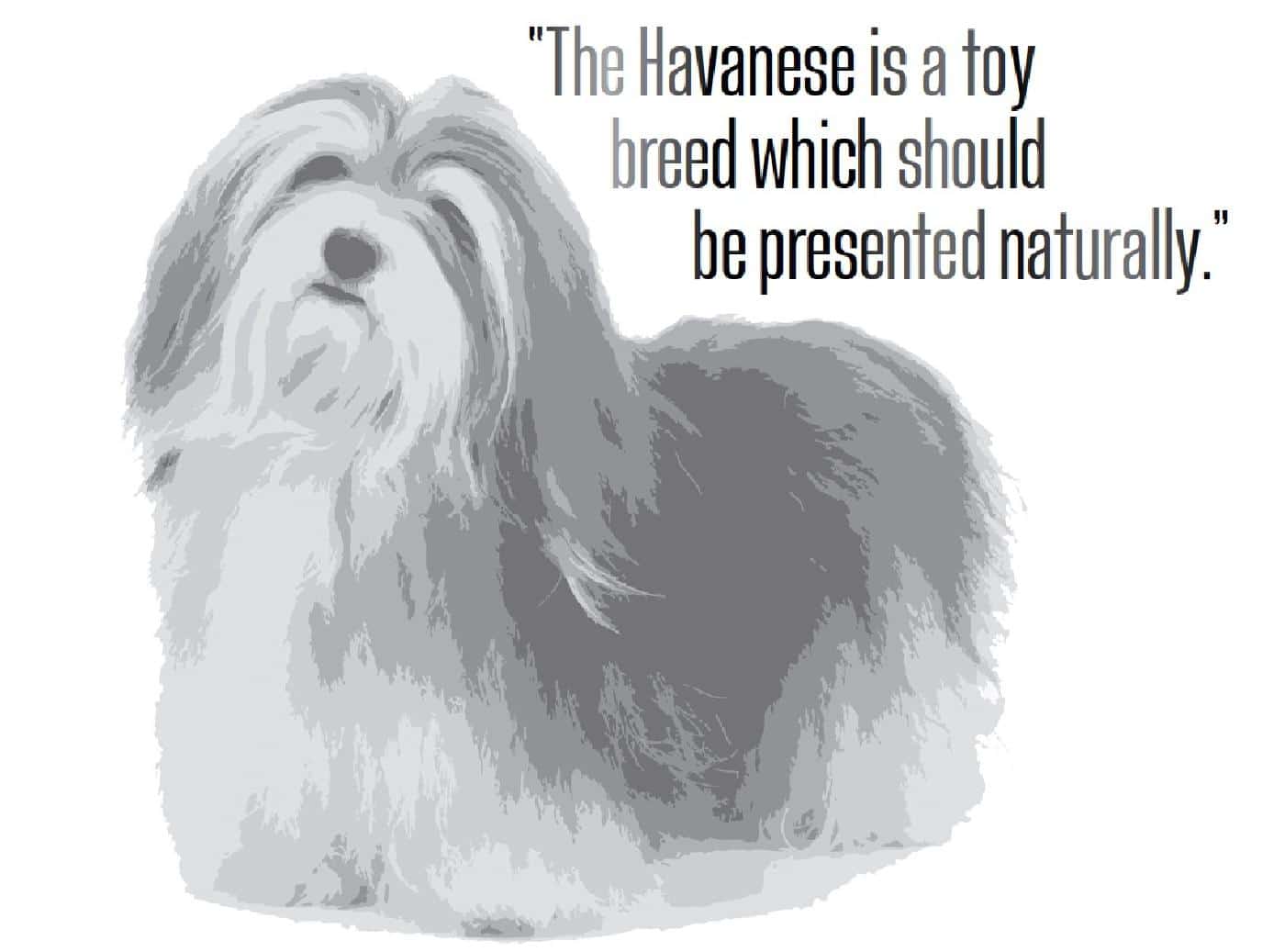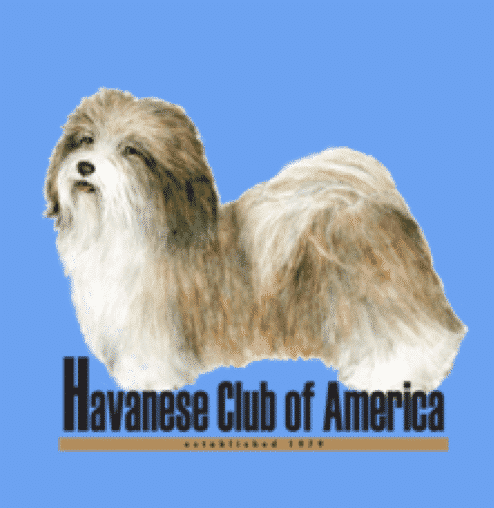Judging The Havanese | The Havanese is a small, sturdy dog of immense charm. The native dog of Cuba, he is beloved as a friendly, intelligent and playful companion. The Havanese is a joy to have as conformation dog, performance dog or as a beloved companion to enrich our life. This dog with many talents has a wonderful, playful, loving temperament, suited for all walks of life.
WHAT MAKE THE HAVANESE UNIQUE AMONG TOYS?
1. Topline: Straight, but not level, rising slightly from withers to rump… the result of
moderate angulation fore and aft combined with a typically short upper arm.
2. Outline: longer than tall, with head carried high and tail arched over back.
3. Gait: Springy with moderate reach and drive, showing free reach and good extension, not stilted, may show flash of pad coming and going. The topline holds under movement, neither
flattening nor roaching.
4. Coat: Soft, silky, wavy and abundant.May be corded.
5. Expression: Broad back skull and large dark, almond eyes: Correct ear set follows line of skull: full rectangular muzzle is slightly sorter than back skull; the expression is soft and intelligent,mischievous rather than cute.
6. Temperament: Intelligent, playful. Sweet and non-quarrelsome.
Important to judges: The six critical elements of breed type listed above are in judging order, not in order of importance. All should be given equal weight in judging, regardless of whether they are visible on the go around or only on the table.
JUDGING — HOW TO APPROACH A HAVANESE ON THE TABLE
As you approach a Havanese on the table for individual exam, keep in mind that although they are adorable, they will do best if you don’t start by baby-talking them. Observe them in profile on the table to get a picture of their outline and then proceed to the front of the table. Place the palm of one hand under the dog’s chin to calm him and to help him feel certain that you are there. Many Havanese have hair over their eyes and need to be reassured that you are there and are about to examine them, temperament can be assessed at this point to be certain they are friendly and happy to greet you. With one hand under the lower jaw, the other hand can move the hair to see their eyes, feel the length of muzzle and structure of head. Ask to have the exhibitor show you the bite and check only for full complement of incisors and correct bite. It is not necessary to ask to see the side teeth, as molar and premolars are not discussed in the standard. Check the front legs for straightness: don’t let growth plates in puppies fool you, young dogs often have a bump in their front legs until growth is complete.
Move to the long side of the table to feel texture of the coat. Remember to determine that the dog has a short upper arm. The length from the foot to the elbow, elbow to withers and withers to the top of the head are equal. Havanese are supposed to have some length of neck and look “balanced” when observing their profile.
Measure the length of the dog by placing your hands underneath the coat as follows: slide your hands under the coat so that the palm of one hand is under the coat and pressing against the point of shoulder and the other hand is pressing against the buttock, observe your two hands to determine that the measurement between your hands is “slightly longer” than the dog is tall. Check to see if the length is coming for the rib cage or loin, if you have any questions that the height of the adult dog on the table is not between 8 1⁄2” and 11 1⁄2” inches, request a wicket and measure the dog. The ideal height is 9” to 10 1⁄2” to the withers although 8 1⁄2” to 11 1⁄2″ i s acceptable. (The minimum height shall not apply to dogs or bitches under twelve months of age.)
Assess the topline moving the palm of your hand over the length of the topline to feel the straight, but not level, topline called for in the standard, without a roach. A flat topline is quite evident if you slide your fingers over the length of the topline. A flat topline (horizontal) and a topline that slopes downward should be faulted; the slight rise of topline is a hallmark of the breed.
Please be sure to feel the structure of the rear legs to be sure the hocks are well let down, short and parallel. This is a very hairy breed and unless you are willing to get under the coat to feel the structure, relying solely on a visual evaluation will deceive you. Don’t worry about the messing up of coats! A trimmed dog, trimmed other than its paws and around the anal/genital areas should be so severely penalized as to preclude placement.
When your table exam is concluded and you observe the dog doing his individual movement, be sure to look for the unique springy gait and rise of the topline and head carriage is high. Havanese should always be presented at a natural step on a loose lead.
FINAL COMMENTS IN CLOSING:
The Havanese Club of America, Inc. would like to remind judges, exhibitors and breeders, that the Havanese is a toy breed which should be presented naturally. Havanese should not have their coats ironed, bleached or colored in an effort to change the natural characteristics of the coat, they should not be trimmed anywhere other than the genital area or around the feet for neatness, they should not be sculpted by trimming the edges of the coat nor should coat be removed to enhance or change the lines of the dog. The coat should never be deliberately parted down the back; a natural part due to the length of the hair is acceptable. Teasing the coat or brushing it into a “comb-over,” to create an illusion of a rising topline is becoming more commonplace and should be discouraged even to the point of withholding placement. Brushed and corded coats are equally acceptable, the hair on top of the head may fall forward over the eyes or many be brushed back from the face and allowed to fall naturally to both sides of the head. Two small braids, one on each side of the head, are allowed. A Havanese should not be shown with the fall of its head groomed in any other manner. Dogs shown in any manner other than described above should be penalized to the point of withholding placement.









